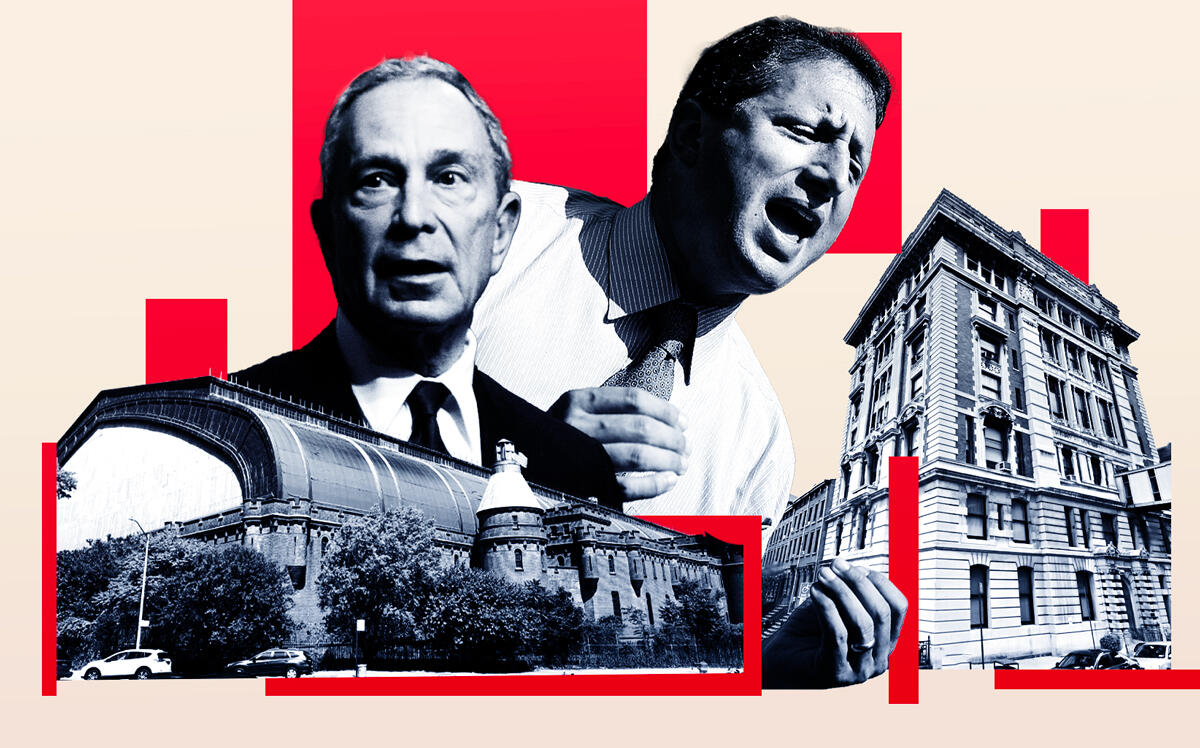
Trending
When pols ignore past, city pays price
Lessons from Amazon HQ2, Kingsbridge Armory and Brooklyn Bridge Park

As Santayana famously said, those who cannot remember the past are condemned to repeat it. More than a few New York City leaders fall into this group.
Who can forget when Rep. Alexandria Ocasio-Cortez, state Sen. Mike Gianaris and others beat back Amazon’s HQ2 project in Long Island City, fearing its well-paid workers would outbid New Yorkers for housing? But the opponents did apparently forget — or never experienced — the era when the city was desperate just to keep good jobs, let alone attract them.
It didn’t occur to them that the city’s economy and tax revenues don’t always rise, and that we might need those Amazon jobs some day. Twelve months later, the pandemic hit and 400,000 people fled the city.
But lots of lesser-known examples of Santayana’s point pop up from the daily news churn.
Harlem Council member Kristin Richardson Jordan killed a 917-unit, half-affordable project in June, after which the developer said he would pivot to a truck depot project that does not require her approval. Her colleague Julie Won is threatening to spike a 2,800-unit project in Astoria, which would mean warehouse projects there instead.
Neither seems to remember that when then-Council member Brad Lander failed to rezone the Long Island College Hospital site for mixed-income housing, Fortis Property Group went ahead with market-rate condominiums (with mixed results). Lander and Jordan made the classic mistake of making the perfect the enemy of the good.
Now Bronx politicians are trying to fill the city-owned Kingsbridge Armory, something their predecessors prevented from happening in 2009. In that fiasco, the Related Companies’ indoor mall plan was selected by the Bloomberg administration only to be rejected by the Bronx political establishment. The massive armory remains vacant to this day.
(Developer Young Woo had proposed an innovative marketplace for the armory, but lost out to Stephen Ross.)
Related’s project died because the borough’s City Council delegation insisted all workers at the proposed mall be paid a “living wage” and Mayor Michael Bloomberg refused to bake that into the property’s zoning. Bloomberg believed retail tenants would not lease space if they had to pay higher wages there than in the rest of the city.
It turned out both sides miscalculated: Not long after the project’s demise, the state raised the city’s minimum wage to well above what Bronx politicians had demanded at the armory.
Read more



The next proposal for the Kingsbridge Armory promised lots of ice rinks, good-paying jobs and community benefits.
Bronx leaders loved the plan, but lenders did not — even after elected officials tried to save it with massive subsidies. It dragged on for eight years, unable to get private financing, and finally died.
Will Bronx leaders take these lessons into account as they try again? Don’t bet on it.
As usual, they want a community-driven plan, which sounds great except that reaching a consensus is a theatrical exercise, takes forever and tends to produce a proposal so fantastic that it makes no business sense.
No problem, the electeds say. If lenders won’t finance it, taxpayers will.
Actually, they won’t. When was the last time the city or state built a commercial complex and agreed to subsidize it indefinitely? Maybe Javits. But the convention center draws millions of big-spending, out-of-state visitors. Ice rinks don’t.
A more viable model for public projects is Brooklyn Bridge Park. The Pataki and Bloomberg administrations provided the capital to build the recreation area, but insisted it be self-sufficient thereafter. Its operating budget would be funded by real estate development — luxury apartments — at the park’s edges.
Some community members fiercely opposed the plan. Private development in a park? Blasphemy!
But the results have been spectacular. The park is magnificent, drawing visitors from well beyond Brooklyn Heights. The apartments have fetched record prices, bringing wealthy people to Brooklyn without displacing anyone. They certainly have not ruined the park.
The naysayers had warned Brooklyn Bridge Park would set a precedent, leading to other projects like it. We can only hope they are right. Good people of the Bronx, are you listening?




